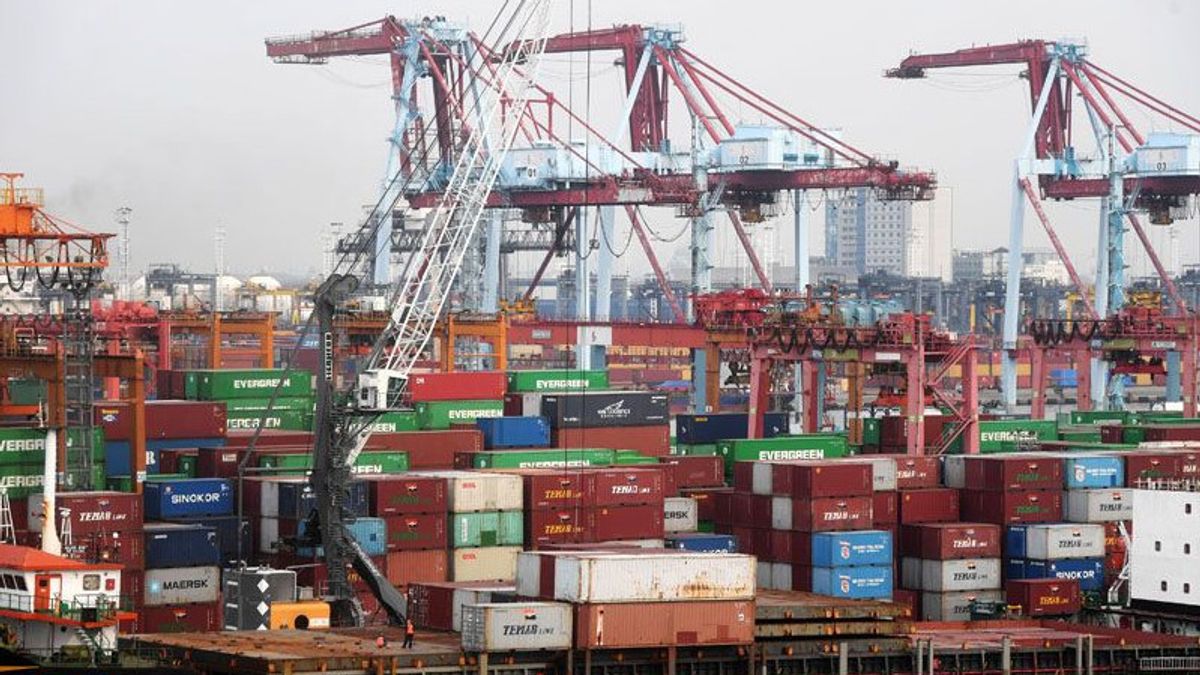JAKARTA Indonesia's trade balance in April 2024 again recorded a surplus of US$3.56 billion.
This achievement extends Indonesia's trade balance surplus trend to 48 consecutive months since May 2020 with a surplus accumulated value of 157.21 billion US dollars.
Head of the Fiscal Policy Agency, Ministry of Finance, Febrio Kacaribu said, the achievement of the trade balance, which has always been positive for the last four years, provides a solid foundation in order to maintain national economic resilience.
"Nevertheless, we still have to be aware of changes in global conditions and continue to strengthen policy support in order to encourage sustainable growth," Febrio said in a statement, quoted Thursday, May 16.
Indonesia's exports in April 2024 were recorded at 19.62 billion US dollars, an increase of 1.72 percent (yoy), driven by an increase in oil and gas exports in line with the increase in global energy prices.
On the other hand, non-oil and gas sector exports in April 2024 were recorded at 18.27 billion US dollars, with the largest share coming from mineral fuel exports of 16.83 percent of total non-oil and gas exports.
Meanwhile, precious metal and nickel commodities experienced a significant increase, respectively by 70.97 percent (yoy) and 24.67 percent (yoy), driven by an increase in nickel prices and also an increase in the volume of precious metal exports.
Cumulatively, Indonesia's export value in January April 2024 was recorded at 81.92 billion US dollars, with the largest share coming from exports to China at 23 percent of total exports, followed by the United States at 10.48 percent and India at around 9.01 percent.
Meanwhile, Indonesia's exports to the ASEAN region in the same period contributed 17.74 percent.
Then, Indonesia's imports in April 2024 were recorded at 16.06 billion US dollars, up 4.62 percent (yoy), driven by the increase in imports of several major commodities, including electric machinery/completion, plastic and goods from plastic, organic chemicals, and sugar and sugar fireworks.
In terms of the use of goods, the increase in imports came from imports of capital goods by 13.57 percent (yoy), auxiliary raw materials by 3.29 percent (yoy), and consumer goods by 0.56 percent (yoy).
Meanwhile, this increase in imports is in line with the increase in consumption demand during Ramadan and Eid and the maintenance of Indonesia's inflation rate within the target range.
The increase in imports by the use of goods group has made a positive contribution in encouraging Indonesia's manufacturing activities so that it remains in an expansive zone, with the manufacturing PMI index reaching 52.9 in April 2024. Cumulatively, Indonesia's import value in January-April was recorded at 70.95 billion US dollars.
In the future, Febrio said that trade performance is expected to continue to grow positively in line with the performance of export volume which continues to grow amid a stable but slow global recovery (IMF, April 2024).
SEE ALSO:
In addition, geopolitical conditions that are still unstable and the decline in economic activity of major partner countries also need to be watched out for and anticipated, because they can have an impact on Indonesia's trade performance.
Febrio said that by observing the performance of Indonesia's trade in April 2024, the Government will continue to monitor the impact of the global slowdown on national exports.
"In addition, anticipatory steps will continue to be prepared through encouragement for the sustainability of natural resources downstream, increasing the competitiveness of national export products, and diversifying major trade products and partners," he concluded.
The English, Chinese, Japanese, Arabic, and French versions are automatically generated by the AI. So there may still be inaccuracies in translating, please always see Indonesian as our main language. (system supported by DigitalSiber.id)
















